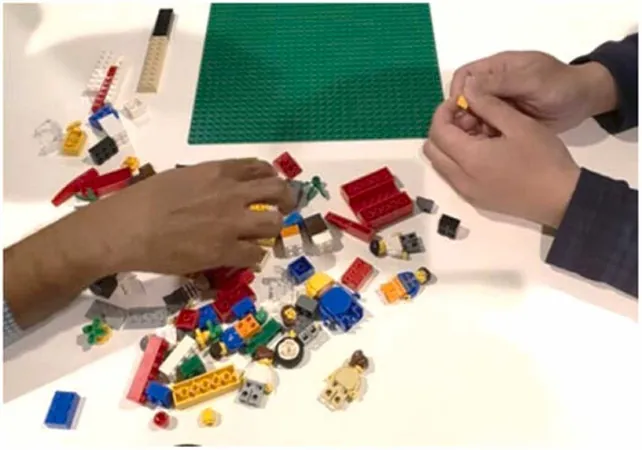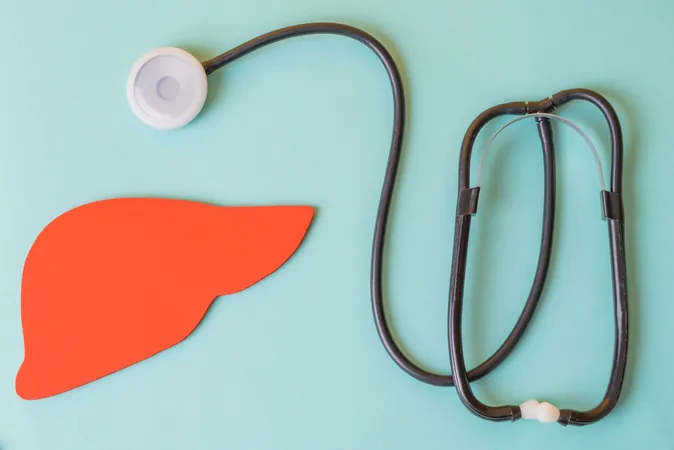
Breaking Down Barriers: How LEGO is Revolutionizing Collaboration Between Midwifery and Medical Students
2024-11-10
Author: Wei Ling
Introduction
In a surprising twist, LEGO bricks, often relegated to children’s playtime, are emerging as powerful tools in medical education. Recent research led by midwifery specialists from Flinders University and the University of South Australia has revealed that these colorful blocks effectively serve as icebreakers between midwifery and medical students, fostering collaborative environments essential for future healthcare professionals.
Research Background
Liz McNeill and Dr. Lyn Gum spearheaded the study utilizing LEGO to create a bridge for communication in a field known for its challenging dynamics. McNeill, who has long kept a box of LEGO bricks handy in her teaching space, noted their unexpected role in alleviating tension during vulnerable conversations. “By incorporating LEGO SERIOUSPLAY principles into workshops, we aimed to enhance comfort levels among students,” she explained.
Importance of Collaboration in Healthcare
Historically, the healthcare environment often breeds power struggles, especially between midwives and obstetricians. “Starting early with these future professionals can lead to constructive collaborations down the line,” stated McNeill. The LEGO SERIOUSPLAY method, developed by Swiss scholars Johan Roos and Bart Victor in the 1990s, uses the act of building to provoke creative dialogue and collective problem-solving.
Workshop Experience
Over a series of engaging workshops held between 2018 and 2020, midwifery and medical students faced the challenge of collaboratively constructing a birthing room using LEGO bricks. This hands-on experience not only sparked lively discussions but also allowed students to express and integrate various birthing care perspectives.
Measuring Success
Determining the success of this innovative approach, researchers administered pre- and post-workshop surveys. Despite initial skepticism, feedback was overwhelmingly affirmative, highlighting the positive impact of LEGO as a communication tool. “The conversations among students were fascinating,” Dr. Gum reported. “They shared their experiences and perspectives, leading to a deeper understanding of their respective fields.
Building Relationships
The workshops didn't just enhance dialogue; they fostered friendships. Even during meal breaks, students from different disciplines continued to engage, signaling a shift in attitudes towards collaboration. “It’s fulfilling to hear midwifery students say they felt at ease interacting with their medical peers in the hospital,” McNeill remarked.
Broader Implications
These findings present a compelling case for integrating LEGO into interdisciplinary training programs. According to McNeill, “Interprofessional socialization is crucial for breaking down barriers in high-stakes medical environments.” The implications are clear: using LEGO as a playful yet impactful educational tool has the potential to reshape dynamics in clinical settings, promoting better teamwork and understanding among future healthcare providers.
Conclusion
As the healthcare landscape continues to evolve, embracing creative methods like LEGO SERIOUSPLAY may just be the answer to breaking down traditional silos and enhancing collaborative care. Why is this important? Because building a cohesive team can significantly improve patient outcomes—one colorful brick at a time!


 Brasil (PT)
Brasil (PT)
 Canada (EN)
Canada (EN)
 Chile (ES)
Chile (ES)
 España (ES)
España (ES)
 France (FR)
France (FR)
 Hong Kong (EN)
Hong Kong (EN)
 Italia (IT)
Italia (IT)
 日本 (JA)
日本 (JA)
 Magyarország (HU)
Magyarország (HU)
 Norge (NO)
Norge (NO)
 Polska (PL)
Polska (PL)
 Schweiz (DE)
Schweiz (DE)
 Singapore (EN)
Singapore (EN)
 Sverige (SV)
Sverige (SV)
 Suomi (FI)
Suomi (FI)
 Türkiye (TR)
Türkiye (TR)